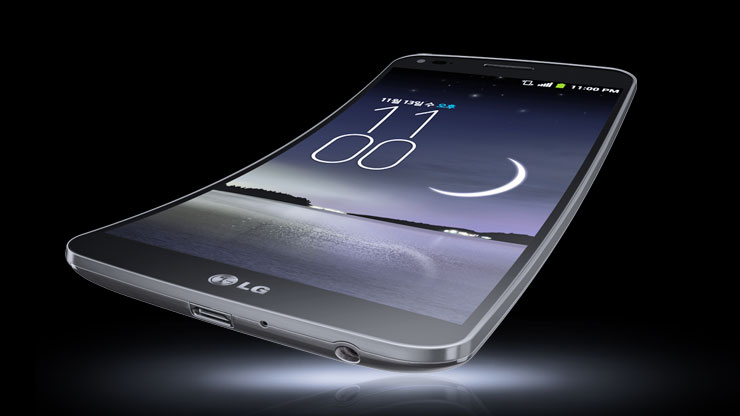Why you can trust TechRadar
Unsurprisingly design is one of the major talking points on the LG G Flex, and the most noticeable aspect of it is that curve.
When I picked up the G Flex for the first time the curve felt very pronounced, almost overwhelming, and I was left wondering how I'd cope.
It was rather unnatural and I was constantly shuffling it in my hand to find a comfortable, workable position.
As the days ticked by though the LG G Flex became easier to manage and the curve which initially felt overpowering, started to fade into the background, to a point where I rarely noticed it.
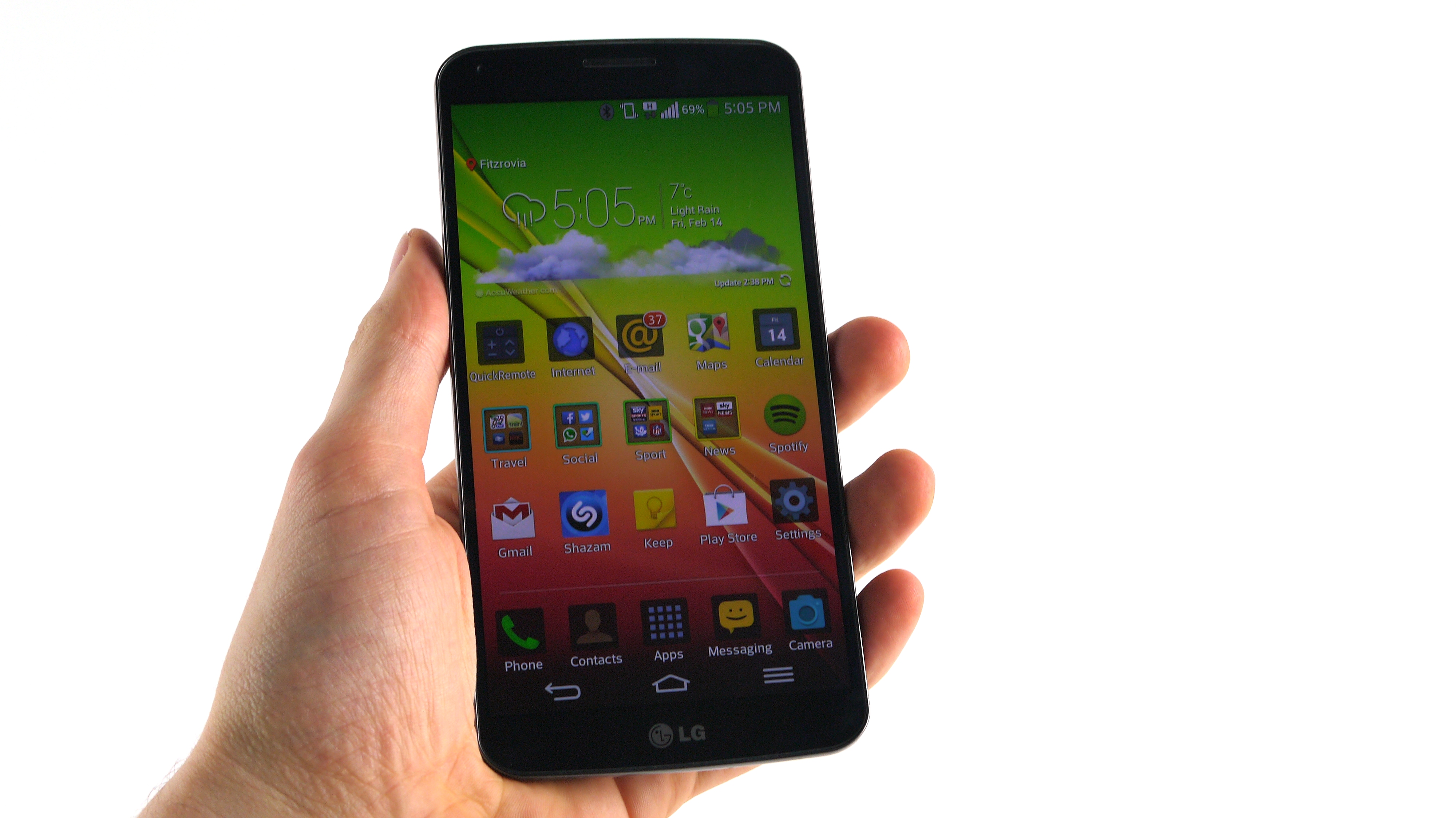
There's no metal on show with the G Flex, although that's no surprise as it requires its frame to be able to flex - so plastic it is.
On the rear of the G Flex though is a new material, and one LG claims is self-healing, managing to absorb small scraps and dents and reforming them to the natural, smooth curve.
While that sounds wonderful I did notice that my G Flex picked up a small scratch which didn't disappear, calling into question the effectiveness of the technology.
Sign up for breaking news, reviews, opinion, top tech deals, and more.
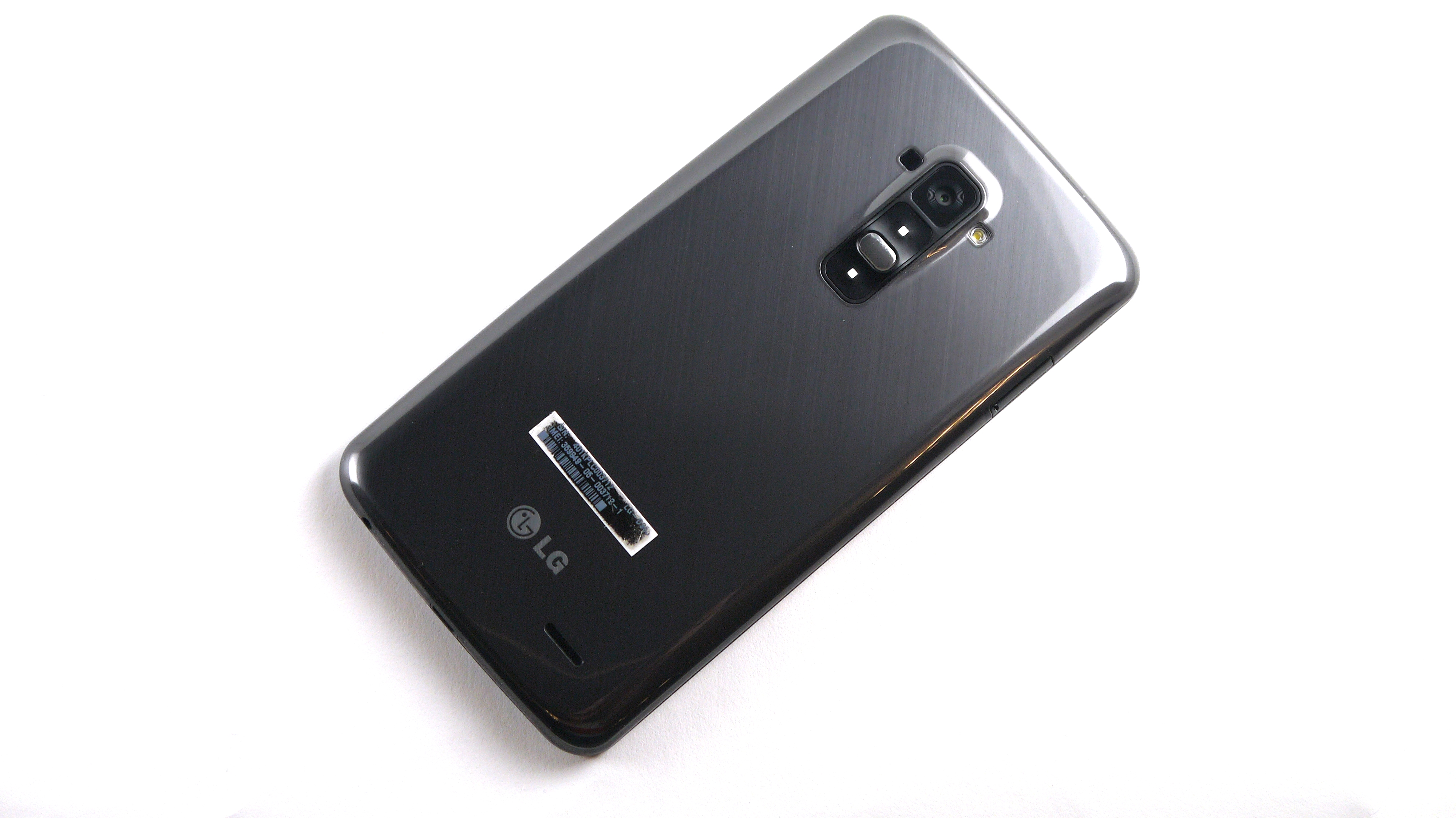
Unfortunately this covering doesn't provide much in the way of grip, which is a bit of an issue considering the sheer size of the G Flex (160.5 x 81.6mm) means it's already difficult to hold in one hand.
Another thing about the self-healing rear is that it's a magnet for dust and grime, and I was constantly having to wipe the G Flex to avoid it looking dirty.
At 8.7mm deep the LG G Flex is pretty slim, so as long as you can wrap your digits round the width of the device it should sit snugly in the palm - although I found myself doing a lot of shuffling as I moved from the navigation bar to the top of the screen.
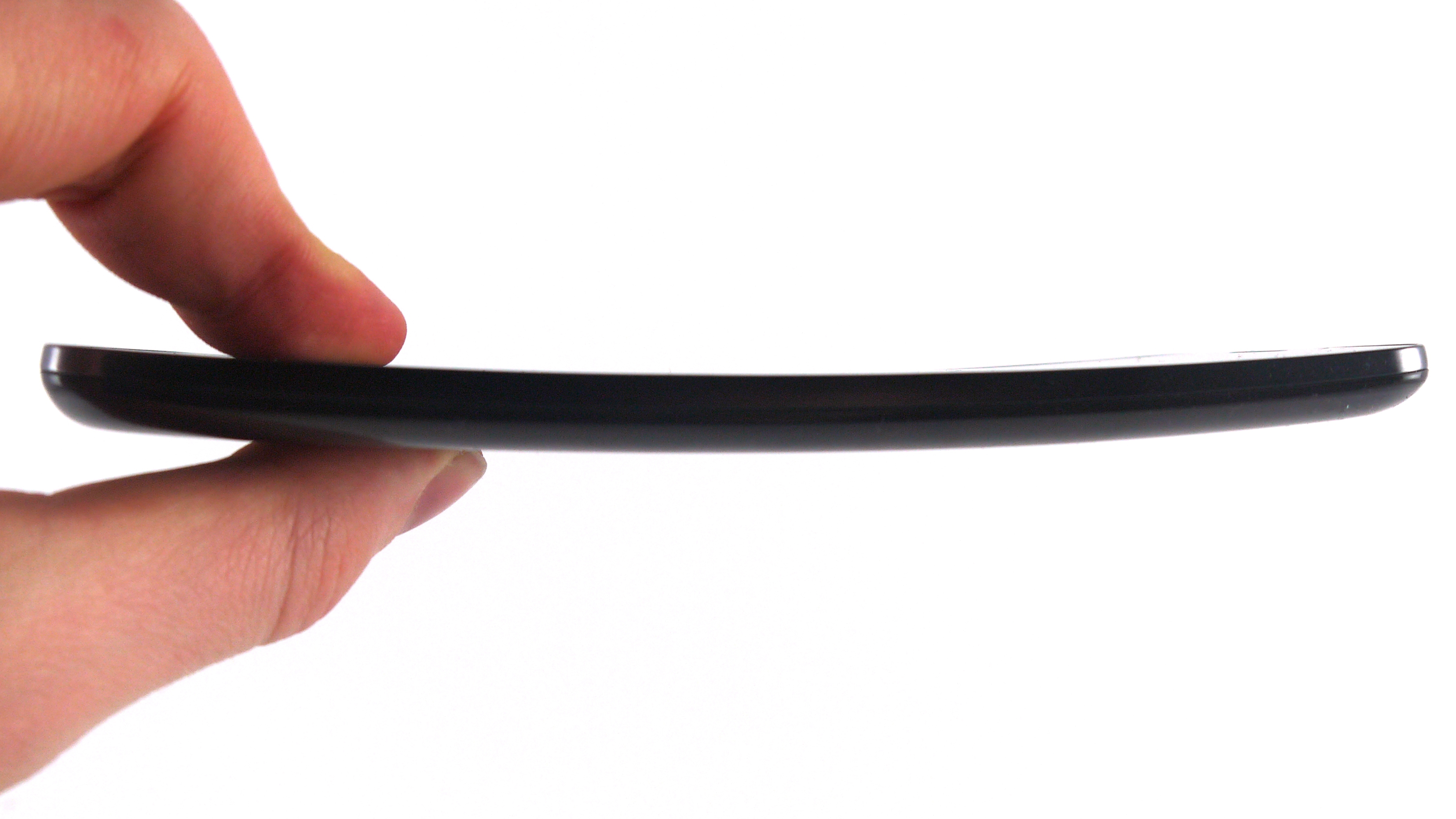
Carrying on from the design of the LG G2, the G Flex doesn't feature any physical buttons on its front, sides or top - with LG electing to place the power/lock button and volume keys on the rear, just below the camera lens.
I'm still not sold on the location of these buttons, but LG has at least made them easier to find on the G Flex.
Both the volume up and down keys sport protruding nubs allowing your fingers to find them much easier than on the G2.
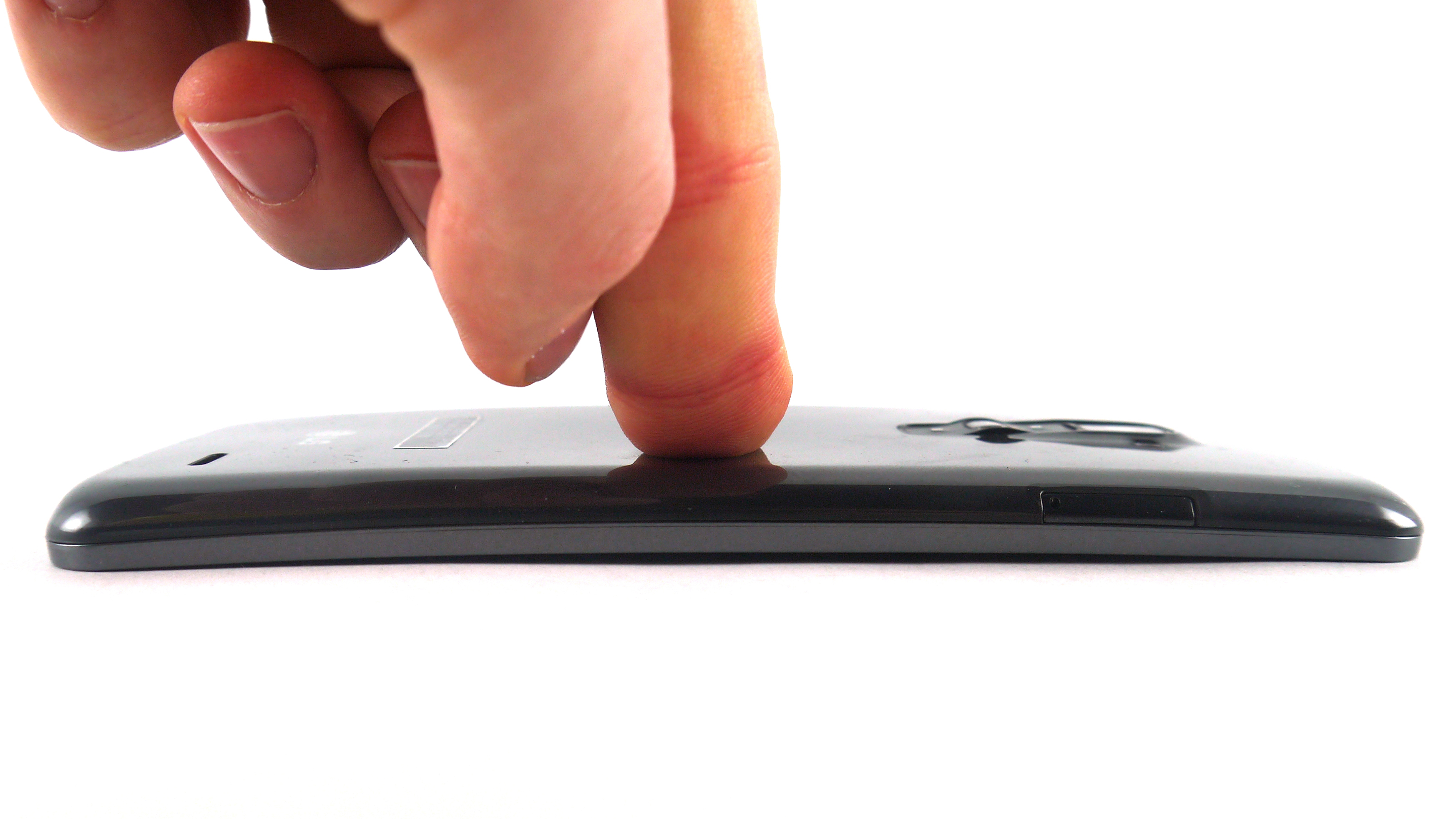
The power/lock key has also been enlarged on the G Flex, making it much easier to hit unsighted compared to the G2.
It subtlety glows when you receive a notification, alerting you to a communication when the G Flex is face down, but without disturbing the meeting you're in, or the in-depth discussion you're having down the pub.
I found the buttons were relatively easy to find, but there were occasions where I had to flip the G Flex over to make sure I was hitting the correct key.

The 13MP lens on the rear of the LG G Flex is flanked by a single LED flash on its right and an infra-red blaster to the left - the latter of which is located on top of the G2, but its placement on the Flex is far superior.
When I used the G2 to control my TV I had to point the handset like a traditional remote control, but that meant it was difficult to see the on screen buttons.
With the LG G Flex I was able to have the screen facing me at all times, making it much easier to hit the correct buttons to adjust volume, change channel and power my TV on and off.

The left side of the G Flex isn't totally uninterrupted, with a microSIM tray slot breaking up the plastic frame.
On the base you get a centralised microUSB port for charging and connecting the handset to your computer, plus a headphone jack.
The speaker however is in the bottom corner on the rear of the device, which isn't particularly useful as it means audio is muffled when holding the G Flex in hand.

Laid on a surface however, the curvature of the G Flex means audio reverberates nicely from beneath the device.
At 177g the LG G Flex is lighter than the 217g HTC One Max, although its plastic construction means it looks and feels inferior to the all metal chassis of the Max.
The G Flex is also lighter than the Nokia Lumia 1520 (207g), but once again the build quality is more premium on the Nokia, and when you consider the cost of the LG phablet it's a little disappointing.

The fact that the LG G Flex curves is fun when it comes to showing off the handset to others, and its party piece flexing trick is cool - but that's all it is. A party piece. It offers very little other than something to show off.
Is it a party piece worth more than £600? In short, no.
It is a sign of things to come, but in its current form on the LG G Flex the flexible ability is more a milestone for the industry to refer to, rather than offering consumers something genuinely useful.

TechRadar's former Global Managing Editor, John has been a technology journalist for more than a decade, and over the years has built up a vast knowledge of the tech industry. He’s interviewed CEOs from some of the world’s biggest tech firms, visited their HQs, and appeared on live TV and radio, including Sky News, BBC News, BBC World News, Al Jazeera, LBC, and BBC Radio 4.
